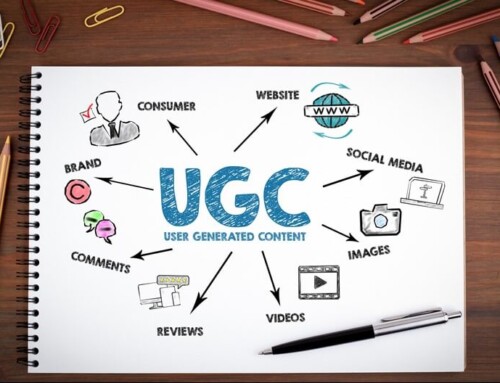This article includes historical information for context. While the core content remains valuable, some details reflect past events and may not be up to date. We regularly update our blog to keep you informed of current insights.
The COVID-19 pandemic was the latest in a line of challenging events throughout recent history, including the bursting of the dot-com bubble, the 9/11 attacks, and the 2008 recession. All of these events have challenged the economy, and in turn, various markets and industries. Some industries have suffered more than others during these difficult periods. Here are six effective marketing strategies to survive turbulent times.
1- Remain Proactive When Crisis Strikes
It is tempting to panic and hit the brakes on your expenditures when crisis strikes. However, doing so would be a mistake. Why? Well, the reasoning is simple: the loudest voice gets heard.
If your competitors are scaling down and cutting their marketing efforts, but you carry on with business as usual, your company will come across as stable, secure, and powerful – a strong force for clients to rely on during difficult times. Plus, you will face less competition as others bow out and lower costs (for example, advertising spend) in the soft market. Bear in mind that you should remain sensitive to the market and resist the urge to generate sales outright unless your product or service is specific to something such as healthcare (e.g., face masks, cleaning products, etc.)
You should not count out previous clients as a potential source of revenue. Think about which of your former clients work in lucrative industries. If they make money now, they have money to spend. Determine how you can sell them on your products or services now, tap deeper into their business, and ask for referrals.
2- Get Creative
When the economy is challenging or if it’s hard to do business, it means that you may have to get extremely creative with your marketing efforts.
Example #1:
A home construction company opted to tackle the current social distancing environment in two specific ways. First, it decided to digitize its blueprints (with slight modifications) and make them for sale. This generated immediate income from homeowners who were planning to build homes in the future. Second, it utilizes this time to train and advance workers in higher skills, such as cross-training.
Example #2:
After 9/11, a product manufacturer devised a strategy that shifted the focus from selling high-ticket products and providing free consumables to the reverse. The high-ticket product was provided for free, provided customers purchased all consumables from the manufacturer and met a minimum use requirement. If that minimum use guideline was not met, then a nominal fee (comparable to a lease payment) would be charged. Not only was this strategy effective, but it tapped into new markets. It is still offered today due to its success.
How exactly can you get creative with your marketing efforts?
Tap into online audiences via groups and forums for trade publications – both in your industry and the platforms where your clients spend time. Doing so will provide valuable insights, including:
- What they are talking about
- Strategies – which ones work and which ones fail
- Contributions you can make to the conversation
- Marketing magnets you can develop to fill your pipeline
Using online listening tools is an excellent way to gauge market sentiment and show you:
- Your target audience’s pain points
- How you can address them through content, better value, and unique selling propositions
- How you may be able to partner with other organizations in your industry to give prospective customers more effective solutions
3- Capitalize on Competitor Weakness and Branding Opportunities
While capitalizing on the weakness of a competitor may sound cold-hearted, it is just a part of doing business. When your competitors close their doors, stop servicing customers and niches that need it, they leave you with a golden opportunity to pick up the slack.
In addition to the above, leverage opportunities for brand recognition. Real-world examples include:
- My Pillow shifted their manufacturing operations to create face masks
- Tito’s Vodka shifted its operations to manufacture hand sanitizer
- Varsity Tutors offered free live kindergarten through 12th-grade virtual classes and tutors
- Texas Roadhouse provided meals for truck drivers since their vehicles are too large for drive-through lanes
- McDonald’s and Burger King handed out two free meals per day for children
- Popeyes offered free access to Netflix to those who tweeted
- Local towing companies put on birthday parades
- Kraft Heinz gave away food and cash
- Bud Light hosted virtual concerts and donated ticket sales to the Red Cross
4- Develop Good Long-Term Habits
Do not wait until a crisis strikes to strengthen your business. Dig deeper into the customers who are buying from you right now to figure out how you can find more customers like them. Analyze sales reports, customer trends, website traffic, and any other data that can give you insights. Branch out vertically and horizontally into existing markets to broaden your customer base.
Develop a balanced customer portfolio. As the saying goes, do not put all of your eggs into one basket. If you do so, and your core target audience’s industry suffers a blow, you will end up in a difficult position. Identify different types of opportunities you can target.
Keep your pipeline full. Your lead or sales pipeline should be overflowing with opportunities, especially during a strong economy or during a growth cycle. If you do not maintain a full pipeline and times get tough, your company could find itself in a world of trouble. Prevent this from happening by making your pipeline a priority.
Establish customer retention and relationship-building strategies. Do not be shy about asking for referrals from customers, vendors, and suppliers. You should also seek out strategic partnerships.
Build and solidify a good company reputation. Ensure that every member of your team who interacts with customers and potential customers does so in a manner that reflects the superior quality and exemplary customer service your business provides.
5- Plan to Ensure You Are Prepared
The best way to set your organization up for continued success in times of crisis is to be fully prepared.
Ponder the worst-case scenarios and develop solutions in advance so they are ready if they occur. Lay out these solutions in detail and make them available to leadership and managers.
Gain full awareness of how products and services fit into the economic model:
- High-value products and services will be negotiated, postponed, and researched (e.g., luxury items such as jewelry, consulting or professional services, new home construction, etc.)
- Solutions – Generate more content and value, obtain a thorough understanding of the buyer’s journey, and strengthen sales teams. Tap new markets and industries. Increase price, especially where value is essential or critical.
- Essential products and services will be more price-sensitive (e.g., groceries, healthcare, etc.)
- Solutions – Present offers and reminders. Raise prices in the short term when demand is high and supply is low, but be cautious about setting prices that are unreasonable and unfair.
- Low-demand products and services will require rethinking (e.g., lawn care, tool manufacturing, HVAC services, etc.)
- Solutions – Bundle offers at higher prices or charge a premium, but provide additional items within that bundle. Introduce new products or services into new markets. Introduce existing products or services into new markets. Introduce new products or services to your existing target audience. Tap markets that your competitors are leaving
- Products and services in high demand (such as utilities, Internet, and phone) will likely be less impacted, but contracts will remain essential.
- Solutions – Differentiation and brand awareness will be critical for buyers to assess value. Some may be switched based on price, others will determine providers based on the biggest value. Be clear about the target audience for campaigns.
6- Analyze your customers’ buying habits.
If you have been in business for a while – for example, since before 2008 – take a look back at your reporting data through the years at the behavior your target audience exhibited during periods when the economy was struggling, crises, and high-growth periods of time. Learn from this data and use it to create a crisis plan.
Ultimately, you can set your business up for success, even during times of crisis, by being fully prepared and by remaining proactive when your competitors are scaling back. When you implement these tactics, you strengthen your organization and ensure it is virtually bulletproof.
For more information about how Gavel International can help your organization through outsourced meeting planning, event, and travel incentive programs, contact us.
This article was last updated on June 3, 2025
- Train LinkedIn’s Algorithm for Elevated Sales Prospecting - October 13, 2025
- Can Your Organization Afford a Dysfunctional Superstar? - October 6, 2025
- Take Action on Organizational Values to Improve Company Culture - September 8, 2025






